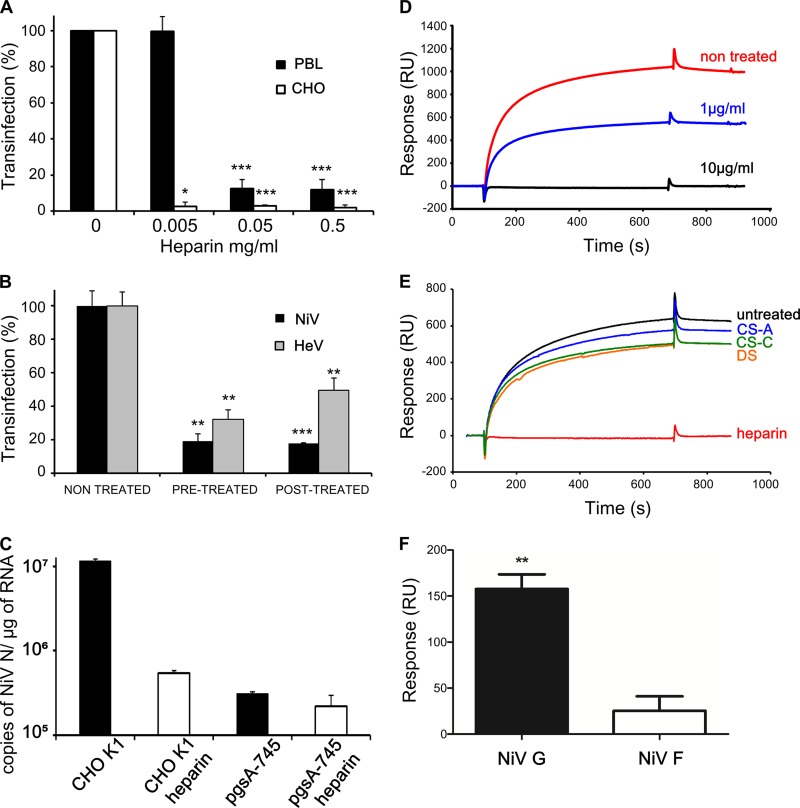FIG 2 .
Heparin inhibits the interaction between henipavirus and HS. (A) PBLs or CHO-K1 cells were incubated for 30 min with the indicated doses of heparin before being put into contact with NiV. (B) PBLs were treated for 30 min with 0.5 mg/ml of heparin before contact with either NiV or HeV (pretreatment) or after 1 h of incubation with the virus (posttreatment). trans-Infection of Vero cells was than determined as described for Fig. 1. Results are expressed as a percentage of inhibition compared to results in untreated cells, ± the SD. *, P < 0.05; **, P < 0.01; ***, P < 0.001 (Mann-Whitney U test). (C) Analysis of NiV binding to CHO-K1 and HS-deficient CHO-pgsA-745 cells, pretreated or not with heparin (0.5 mg/ml). Cells were put into contact with NiV for 24 h, and the number of viral RNA (N gene) copies was determined by RT-qPCR. (D) SPR analysis of NiV pseudoparticle binding to an HP-activated surface in the absence or presence of soluble heparin at 1 µg/ml or 10 µg/ml. (E) SPR analysis of the binding of NiV pseudoparticles to HP-activated sensor chips, after preincubation with either PBS or 10 µg/ml of soluble heparin, CS-A, CS-C, or DS. (F) SPR analysis of the binding of NiV pseudoparticles, expressing either NiV-G or NiV-F protein, to HP-activated sensor chips. The binding response, in RU, was recorded as a function of time after removal of the background provided by nonpseudotyped particles. Results are presented as the averages of 3 separate experiments (± standard errors of the means) and reflect statistically significant binding of NiV-G to HP. **, P < 0.01 (one-sample t test).

